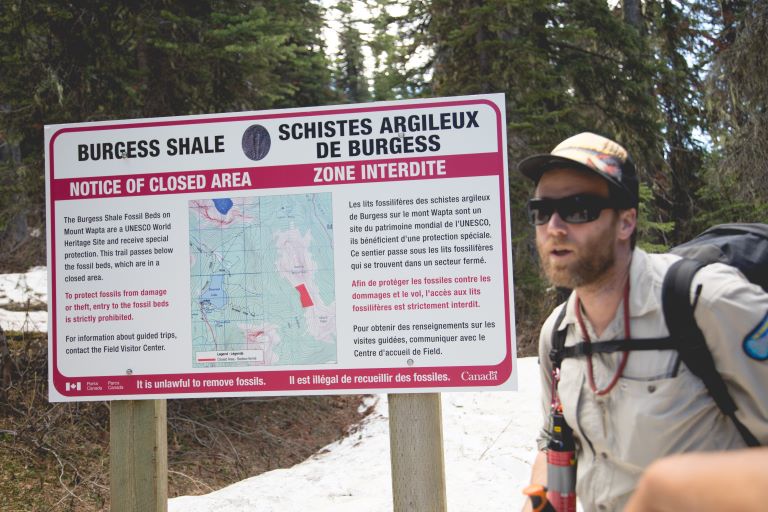In 1984, UNESCO included the Canadian Rocky Mountain Parks (CRMPs) on its World Heritage List. This property consists of the following national parks: Yoho, Banff, Kootenay, and Jasper. As well as, the following provincial parks Mt. Robson, Hamber, and Mt. Assiniboine. The site encompasses a contiguous area that is 2,299,104 hectares in size.
For a property to be included on the World Heritage List if must meet specific criterion. The Burgess Shale meets criterion 8 …to be outstanding examples representing major stages of earth’s history, including the record of life, significant on-going geological processes in the development of landforms, or significant geomorphic or physiographic features;…
In 1981, The Burgess Shale was inscribed on the World Heritage List as its own property. However, in 1984 UNESCO decided that the Canadian Rocky Mountain Parks (CRMPs) property met the criterion for inclusion on the World Heritage List. Due, in no small part, to the fact that the Burgess Shale is encompassed within the CRMPs. At this point, the Burgess Shale property was removed from the Heritage List, and integrated into the CRMPs property.
If not for the Burgess Shale it is possible that the CRMPs property may not have been included on the World Heritage List.
The Burgess Shale fossils would have been plundered long ago by commercial quarrying, if not for the protected status of the national park and UNESCO. The protection they have been afforded made it possible for the 1975 Royal Ontario Museum expedition to find, still lying in the talus, the counterpart (other half) of a rare Branchiocaris specimen collected by Percy Raymond forty-five years previously!
The Convention Concerning the Protection of the World Cultural and Natural Heritage was adopted by the United Nations Educational, Scientific and Cultural Organization (UNESCO) in 1972. The convention’s objective is to recognize sites of global significance, which should be held in trust by nations for humankind, and to ensure the support of the international community for their preservation. The first site that UNESCO added to the World Heritage List was the Galapagos Islands in 1978.

Canada, as a steward of the CRMPs World Heritage property, has obligations to UNESCO for their protection. Consequently, access to the Burgess Shale is restricted to those accompanied by a qualified, licensed guide, such as the Burgess Shale Geoscience Foundation’s guides. The collection of fossils and rocks anywhere within Yoho National Park is prohibited.
Revised for web format from “A Geoscience Guide to the Burgess Shale” by Murray Coppold and Wayne Powell, a Burgess Shale Geoscience Foundation publication. To purchase this book, please go to: the Yoho National Park Visitors Centre, Alpine Book Peddlers, Amazon.ca, or Amazon.com.

